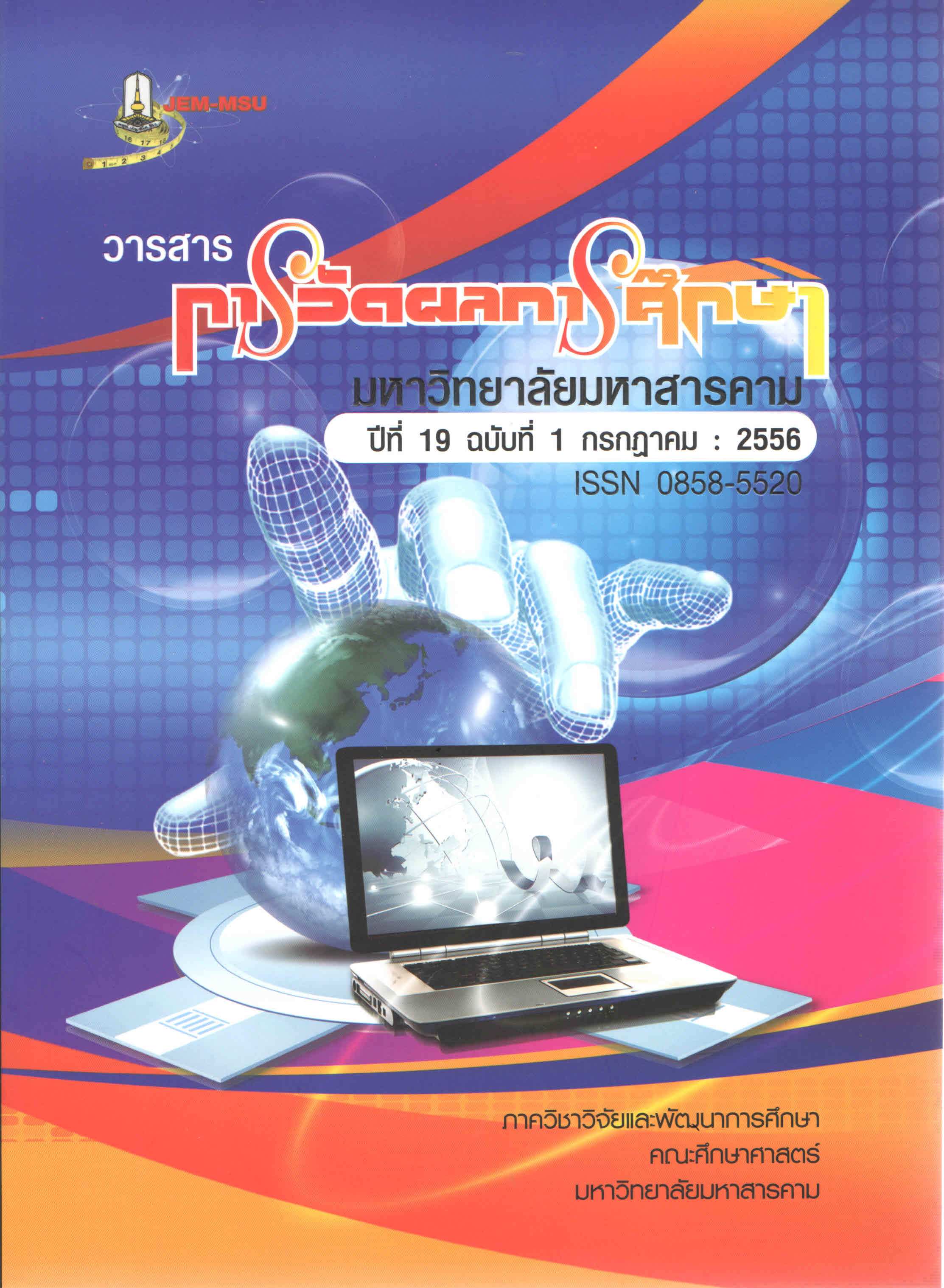Factors Affecting the use of Online Social Networking in the Learning of Mathayomsuksa 4 of Secondary Educational Service Area Office 25
Main Article Content
Abstract
Using social networks for learning the use of the Internet in the social networking sites
that are popular today. The internet can help with homework, research, communication, reporting
and exchange of information, between teachers and students and between the students
themselves. And used in the research. This research aims: 1) to study the factors affecting the use
of social networks in student learning of mathayomsuksa 4, Secondary Educational Service Area
Office 25. 2) to construct a model of the factors affecting the use of social networks student
learning of mathayomsuksa 4, Secondary Educational Service Area Office 25. The sample
consisted of 357 mathayomsuksa 4 students attending schools under the Office of Secondary
Educational Service Area Office 25. Students in the academic year 2011 were obtained using
the multi-stage random sampling technique. Three tools were used for data collection. The first
one was checklist 9 item. Second was : 5 rating scale inventories on factors affecting to the use of
Online Social Networking in the Learning with totally 102 items in 4 aspects, Self Directed
learning with discriminating powers (r) ranging .231 - .534 and a reliability of .803, mastery with
discriminating powers (r) ranging .282-.540 and a reliability of .728, self-esteem with discriminating
powers (r) ranging .235-.620 and a reliability of .696 and Adoption of Innovation with discriminating
powers (r) ranging .436 - .706 and a reliability of .901. Third were 5 rating scale the use of Online
Social Networking in the Learning with totally 23 items, with discriminating powers (r) ranging
.401-.684 and a reliability of .858, and types of the instrument used in this study were The
statistics used for analyzing the collected data were mean, percentage, standard deviation
and stepwise multiple regression analysis.
The results of the study were as follows:
1. The factors positively and significantly related to Using social networks for learning
were Self Directed Learning( 1), Mastery ( 2 ), self-esteem ( 3 ) and Adoption of innovation( 4 )
2. The factors with predicting powers were Adoption of innovation ( 4 ) self-esteem
( 3 ) Mastery ( 2 ) and Self Directed Learning ( 1) respectively with multiple correlation
coefficient ( R ) was .874 and predicting power of Using social networks for learning ( R 2 ) at 76.30
percent. Predictive equations of Using social networks for learning could be constructed in
raw-score and standard score forms as below:
Y ' = .675 + .289
4 + .180 3 + .178 2 + .158 1
'Y
Z = .359
4 + .212 3 + .209 2 + .180 1
In conclusion Adoption of innovation, Mastery, self-esteem and Self Directed Learning,
Affected usage of social networks for learning and therefore the data exchange of teachers and
those involved. One can advise on the adoption of innovation, Mastery , self-esteem and Self
Directed Learning. Students should use social networks for learning the tricks and optimizing their
learning.
Article Details
The content and information contained in the published article in the Journal of Educational Measurement Mahasarakham University represent the opinions and responsibilities of the authors directly. The editorial board of the journal is not necessarily in agreement with or responsible for any of the content.
The articles, data, content, images, etc. that have been published in the Journal of Educational Measurement Mahasarakham University are copyrighted by the journal. If any individual or organization wishes to reproduce or perform any actions involving the entirety or any part of the content, they must obtain written permission from the Journal of Educational Measurement Mahasarakham University.

